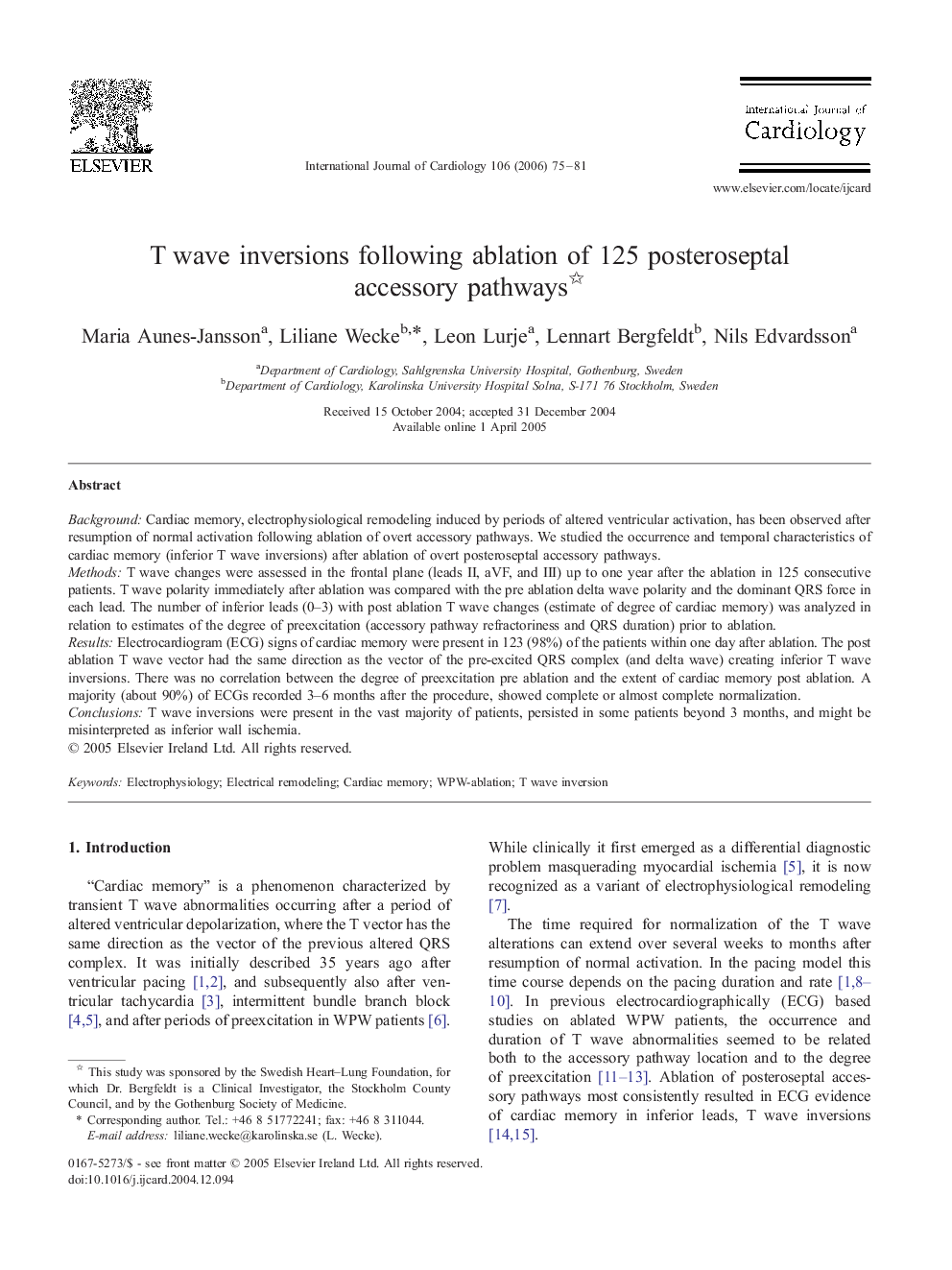| Article ID | Journal | Published Year | Pages | File Type |
|---|---|---|---|---|
| 2937048 | International Journal of Cardiology | 2006 | 7 Pages |
BackgroundCardiac memory, electrophysiological remodeling induced by periods of altered ventricular activation, has been observed after resumption of normal activation following ablation of overt accessory pathways. We studied the occurrence and temporal characteristics of cardiac memory (inferior T wave inversions) after ablation of overt posteroseptal accessory pathways.MethodsT wave changes were assessed in the frontal plane (leads II, aVF, and III) up to one year after the ablation in 125 consecutive patients. T wave polarity immediately after ablation was compared with the pre ablation delta wave polarity and the dominant QRS force in each lead. The number of inferior leads (0–3) with post ablation T wave changes (estimate of degree of cardiac memory) was analyzed in relation to estimates of the degree of preexcitation (accessory pathway refractoriness and QRS duration) prior to ablation.ResultsElectrocardiogram (ECG) signs of cardiac memory were present in 123 (98%) of the patients within one day after ablation. The post ablation T wave vector had the same direction as the vector of the pre-excited QRS complex (and delta wave) creating inferior T wave inversions. There was no correlation between the degree of preexcitation pre ablation and the extent of cardiac memory post ablation. A majority (about 90%) of ECGs recorded 3–6 months after the procedure, showed complete or almost complete normalization.ConclusionsT wave inversions were present in the vast majority of patients, persisted in some patients beyond 3 months, and might be misinterpreted as inferior wall ischemia.
